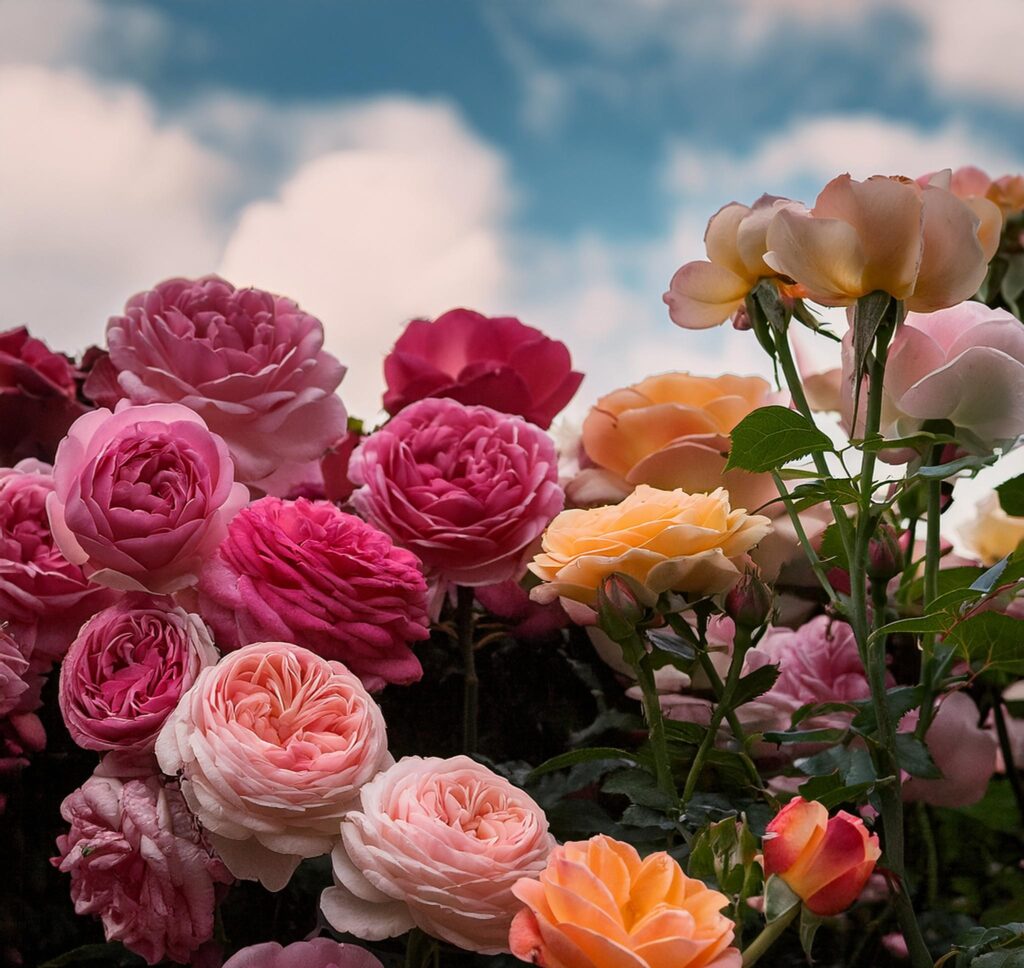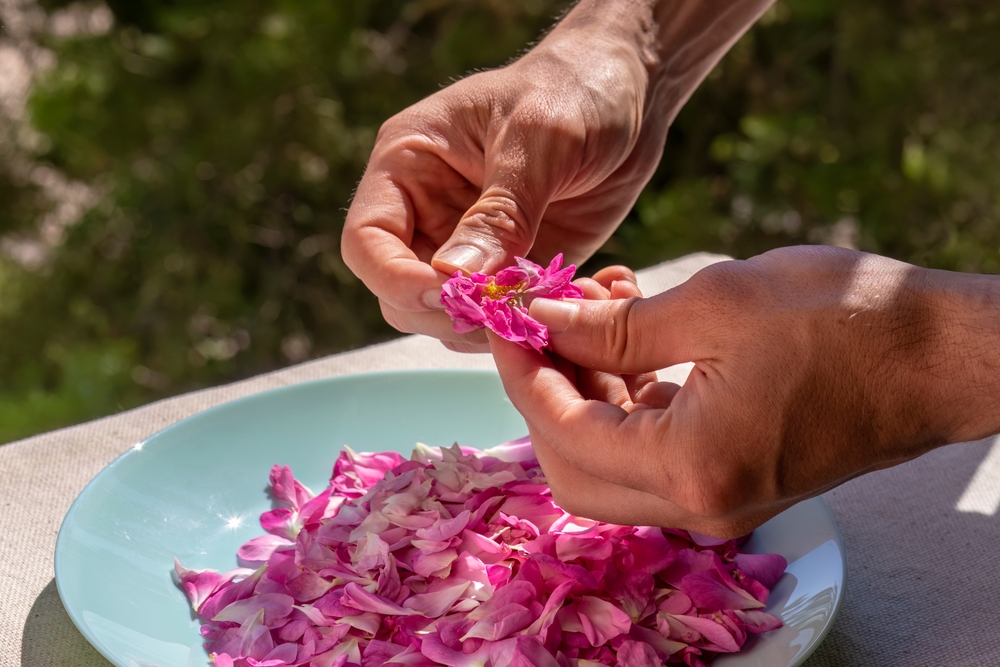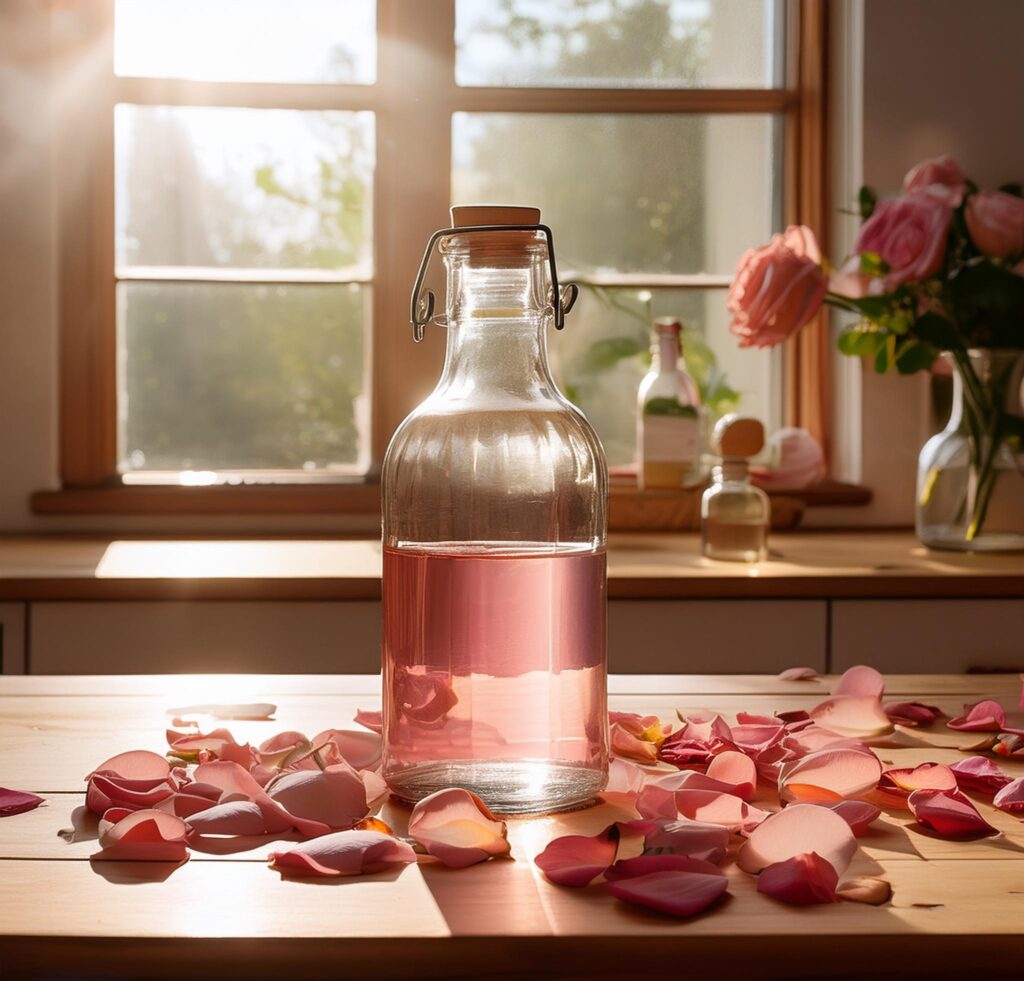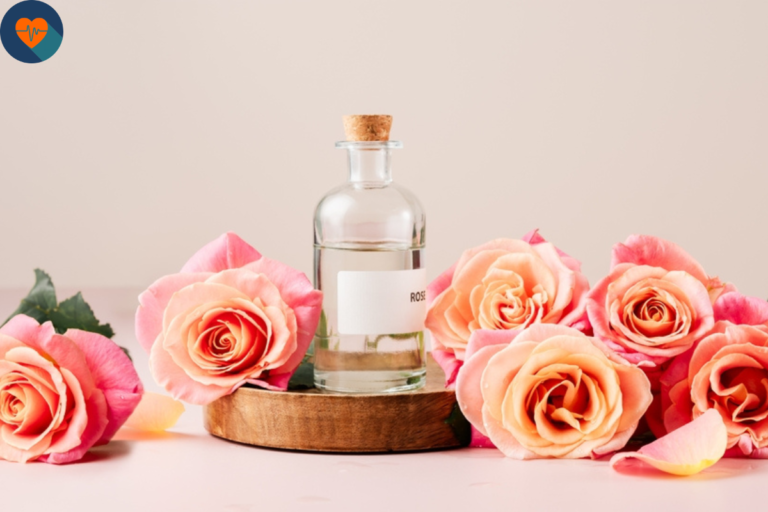Table of Contents
Introduction
Rose water has been treasured through the ages for its captivating sweet fragrance and the myriad benefits it offers, from skincare to culinary delights. Its refreshing floral aroma can uplift the spirit and calm the senses. What makes rose water particularly special is its versatility and accessibility; it can be easily prepared at home, ensuring it is pure, chemical-free, and tailored to your personal needs. This article will present how to make rose water simply and professionally, capturing its freshness and beauty in every drop.
Why Rose Water Is Loved for Freshness
The beauty of rose water lies in its simplicity: with just a handful of fresh or dried rose petals and water, one can create a fragrant, multi-purpose liquid that feels as fresh as the morning breeze. Unlike many commercial products loaded with artificial ingredients, homemade rose water is pure, retaining all the goodness of the petals. This freshness is what people love: light on the skin and never overpowering, with a crisp, natural scent of roses. Whether misted on your face, mixed into desserts, or added to bathwater, this cooling and uplifting substance remains evergreen.
Advantages of Homemade Rose Water
By making rose water at home, you can save money and prepare a natural product without preservatives, additives, or diluted formulas, which might be present in store-bought versions. Homemade rose water is fresh and delivers all the natural oils and other valuable compounds that roses boast, including anti-inflammatory and antioxidant properties. When you make it, you have complete control over the quality, ensuring that the roses you use are pesticide-free and organically grown. Additionally, creating rose water can be a calming activity that brings you closer to nature and connects you to a traditional custom.
What is Rose Water?
History and Uses of Rose Water
The history of rose water dates back to ancient Persia, where it was considered a luxury for kings. The Persians distilled rose petals for the first time to obtain their essence, making rose water an essential part of beauty routines and spiritual practices. It originated in the Persian Empire and later spread to Europe, India, and the Middle East, where it was used not only in cosmetics but also in cooking and religious ceremonies.
Rose water has been associated with purity and luxury, from washing hands before meals to scenting the air during celebrations and healing irritated skin. Today, its applications range from skincare and aromatherapy to culinary delights in Middle Eastern and South Asian cuisine. Whether mellowed onto a bride before her wedding day or infused into sweet syrups and pastries, rose water enchants with its spell-like aroma.
Rose Water in Skincare, Aromatherapy, and Cooking
The uses of rose water today are just as diverse as they were in the past. It serves as a gentle yet effective skin tonic, balancing the skin’s pH, calming irritation, and providing sudden hydration. Many people use it as a natural facial toner that helps tighten pores and brighten skin. The anti-inflammatory properties of rose water make it ideal for irritated or acne-prone complexions.
In aromatherapy, rose water has a mild, soothing scent that reduces anxiety and promotes tranquility. Spraying it around a room or using it as a pillow mist can help induce relaxation for better sleep. While rose water may not be widely used in Western cuisine, it is a key ingredient in many Middle Eastern and South Asian dishes. A few drops can elevate desserts like baklava, Turkish delight, and rice pudding, adding a unique floral flavor. It can also enhance beverages such as teas and lemonades, transforming ordinary drinks into something special.
The Ingredients You Need for Rose Water
How to Choose the Right Roses for the Best Results

The quality of your rose water begins with the roses you choose. Although any variety of roses can be used, some types are more fragrant and effective than others. Damask roses are especially favored for their intense, sweet scent. If you cannot find Damask roses, any fragrant organic roses that have not been treated with pesticides will suffice. Fresh roses are the best option, but dried petals can be used if they are properly dried and stored. When gathering roses, remember that darker, more intensely colored petals typically provide a stronger fragrance, while lighter-colored roses tend to be more delicate. Ensure the roses are clean and free of debris; even organic roses can collect dust and insects when grown outdoors.
Distilled Water: Why It Matters
When making rose water, it’s essential to consider the type of water used. Distilled water is preferable because it lacks the minerals and impurities that could alter the scent, appearance, and shelf life of the final product. Tap water often contains chemicals like chlorine and fluoride that can negatively affect the clarity and fragrance of your rose water. Using distilled water keeps your rose water as pure as possible, capturing the delicate essence of the roses without interference. If distilled water is unavailable, boiling tap water and allowing it to cool can be a suitable alternative.
Optional Add-Ins to Enhance Fragrance and Benefits
While the basic rose water recipe requires only roses and water, you can customize it with optional ingredients. Adding essential oils like lavender, geranium, or chamomile can enhance the floral notes and provide additional aromatherapy benefits. Just one or two drops of these oils will enrich your rose water with calming effects and skin-soothing properties. You may also want to include natural preservatives like vitamin E oil or witch hazel, which can extend the shelf life of your rose water and offer additional skin benefits.
Two Major Rose Water Preparation Formulas
Boiling Formula: The Simmering Method—Easy for Beginners
One of the easiest methods for making rose water is the simmering technique, suitable for beginners. This involves boiling rose petals in distilled water to extract their fragrance and essential oils. Fast and straightforward, it requires only a stove and common kitchen items. However, this method produces a less concentrated form of rose water, and boiling can sometimes diminish some of the more subtle aspects of the roses.
Rose Water: The Distillation Method—A More Refined, Professional Process
In contrast, the distillation method is more refined and yields purer, more concentrated rose water. This process captures steam from boiling rose petals, which condenses back into liquid form. The result is a more robust product without impurities, offering a longer shelf life than rose water made through the simmering method. While this process requires more time and equipment, it is favored by those seeking the highest quality rose water.
Step-by-Step Guide: How to Make Rose Water Using the Simmering Method

Preparing Your Roses: Fresh or Dried?
First, gather your roses. They should be organic, fresh or dried, and pesticide-free. Wash the petals with cool running water to remove any dirt or dust. If using fresh roses, you will need about 2 to 3 cups of petals. For dried roses, only 1 cup is necessary, as they are more concentrated.
Sautéing Roses for Maximum Scent
Place the rose petals in a large pot and cover them with enough distilled water to submerge them. Be cautious not to add too much water, as this will dilute the rose water. Set the heat to low and allow the petals to simmer gently. Do not let the water boil, as this can burn the delicate compounds in the petals. In about 20-30 minutes, the color will seep from the petals into the water, turning it rosy.
Straining and Storing Your Homemade Rose Water
Once the simmering is complete, remove the pot from heat and let it cool slightly. Place a fine-mesh strainer or cheesecloth over a glass bottle or jar, and gently strain the rose petals from the liquid. Store the rose water in a cool, dark place or the refrigerator to prolong its freshness. When stored properly, it will last for about two weeks.
Step-by-Step Process: Rose Water Distillation
Set Up the Distillation Equipment
For distillation, you will need a large pot with a lid, a heatproof bowl, and ice. Place the bowl inside the pot and fill it with rose petals. Add just enough distilled water to cover the petals without allowing the water to reach the bowl’s bottom. Invert the lid on the pot to create a dome over the bowl, filling the top with ice.
How to Make Filtered Rose Water for Longer Freshness
As the water in the pot boils, steam rises through the petals, carrying their essence. The steam condenses on the cold lid and drips into the bowl, forming pure, distilled rose water. This method takes about 30 to 45 minutes, producing a concentrated product that lasts much longer than rose water made through the simmering method.
Correct Gathering and Storing of Rose Water
Once you have collected the rose water in your bowl, allow it to drip slowly into a sterilized glass bottle. When properly stored in a cool, dark area, distilled rose water can last up to six months. Because it is concentrated, you will use less of it for skincare or aromatherapy purposes, and a little will go a long way.
How to Store Rose Water for Long-Term Freshness
Best Containers to Preserve Potency of Rose Water

The best container for rose water is made of glass and fits tightly. Glass preserves rose water without the chemical reactions that can occur with plastic. Dark-colored glass bottles are ideal for keeping light out, as light can deteriorate the quality of the rose water over time. Avoid clear plastic containers, as these may leach chemicals into the rose water, affecting its scent and quality.
Optimal Conditions for Storage to Extend Shelf Life
Rose water can last for up to six months if kept in the refrigerator. If you lack space in your fridge, you can store the rose water in a
cool, dark cabinet. Always keep it tightly sealed to prevent contamination and retain its aroma.
Tips for Identifying Spoilage
Although homemade rose water has a longer shelf life than commercial versions, it can spoil. Watch for changes in color, scent, or consistency. If the rose water has an off smell or appears cloudy, it’s best to discard it.
Conclusion
Making rose water at home is a rewarding experience, allowing you to enjoy its countless benefits and enchanting aroma. With simple ingredients and a few steps, you can create a luxurious product that enhances your beauty routine, elevates your culinary creations, and refreshes your living space. Dive into this timeless craft and let the essence of roses fill your life with beauty, tranquility, and natural goodness.

